Yet to come... TagPies 2.0
TagPies have a new design! Some appetizers...
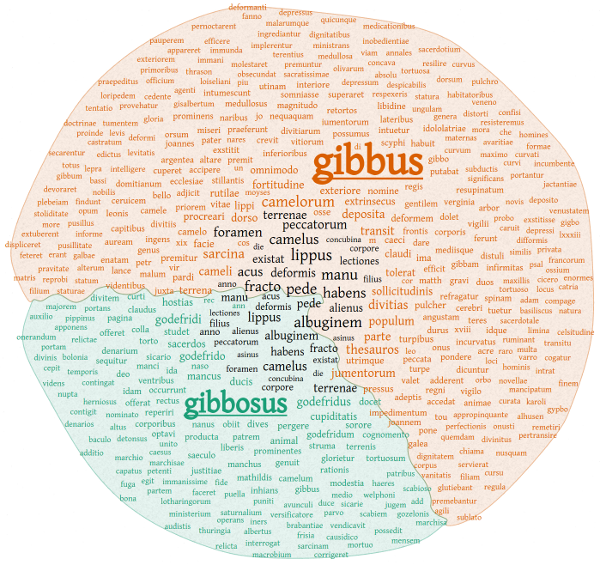 |
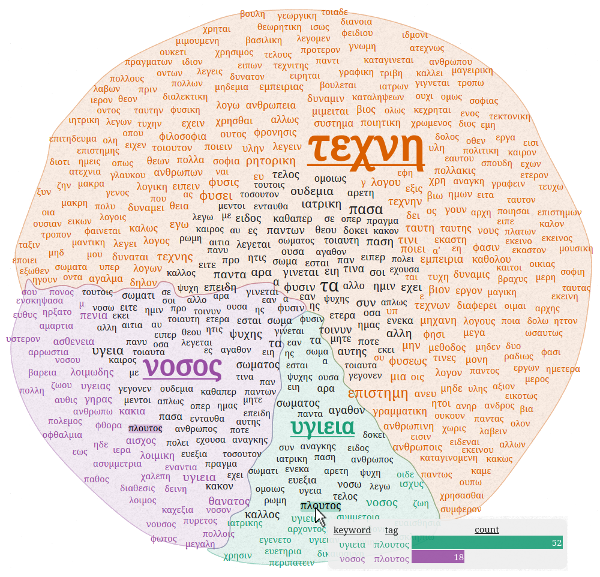 |
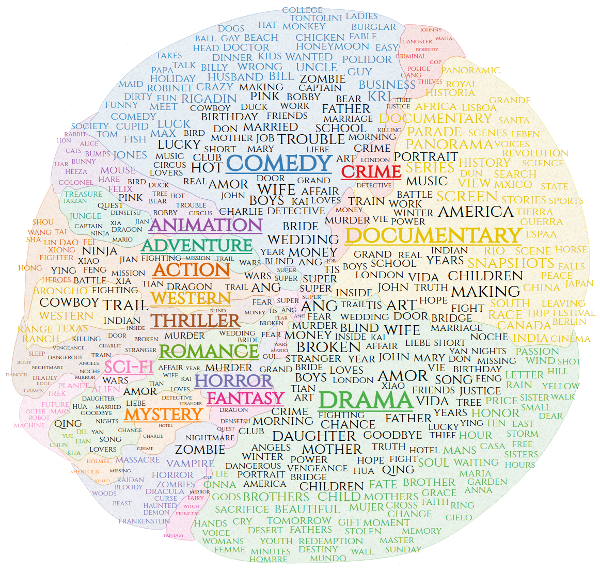 |
What is a TagPie?
For the humanities, the digital age brought changes to the scholars’
research workflows. The ability to query digital libraries in order
to receive text passages containing specific keywords on demand
quickens hypotheses generation, but often, vast numbers of results
are hard to process as text passages need to be checked individually.
Tag clouds can be used to facilitate the access to search results by
aggregating the co-occurrences of a searched keyword, so that
frequent collacates get salient and the context that defines the meaning
of a keyword gets visible. TagPies extend this idea by arranging the
co-occurrences of different keyword searches in a pie chart
manner, so that the contexts in which different keywords occur can be
analyzed and compared to each other. This comparative analysis
was the desired capability of TagPies in the corresponding digital
humanities project eXChange.
During the development, we closely collaborated with
humanities scholars, who state that the resultant visual interface, consistent
of TagPies as a distant reading view for the results of several
keyword searches and a close reading view for the text passages, is a
valuable analysis instrument that serves a novel type of research
interest that requires distant reading arguments — the comparison
of concepts in classic texts — and provokes new research questions.
Furthermore, the humanities scholars mentioned that they have a
much more intuitive and dynamic access to search results when
using TagPies in comparison to working with traditional result lists.
In order to enable a wide applicability, we designed TagPies the
way that it can easily be adapted to textual data of any domain.
The TagPies JavaScript library is based on d3-cloud — examples of the deprecated design are shown below...
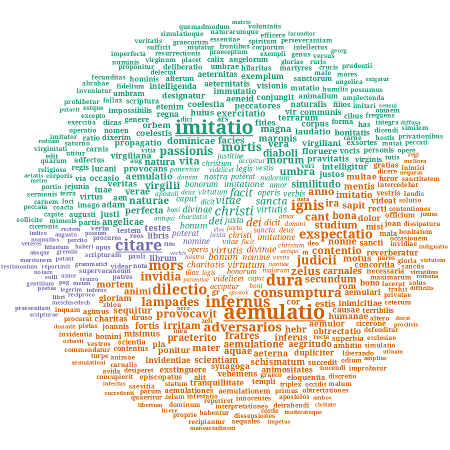 |
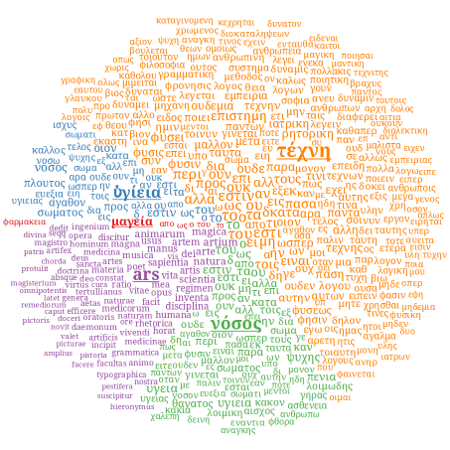 |
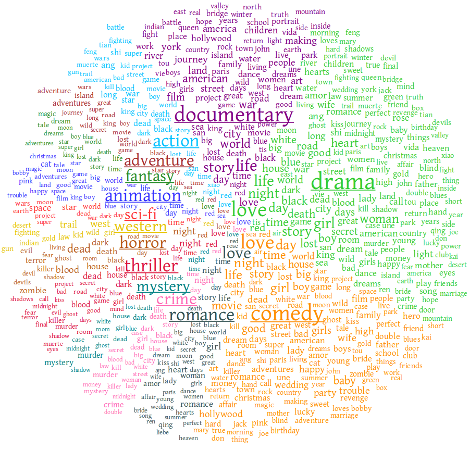 |
 vizcovery.org
vizcovery.org